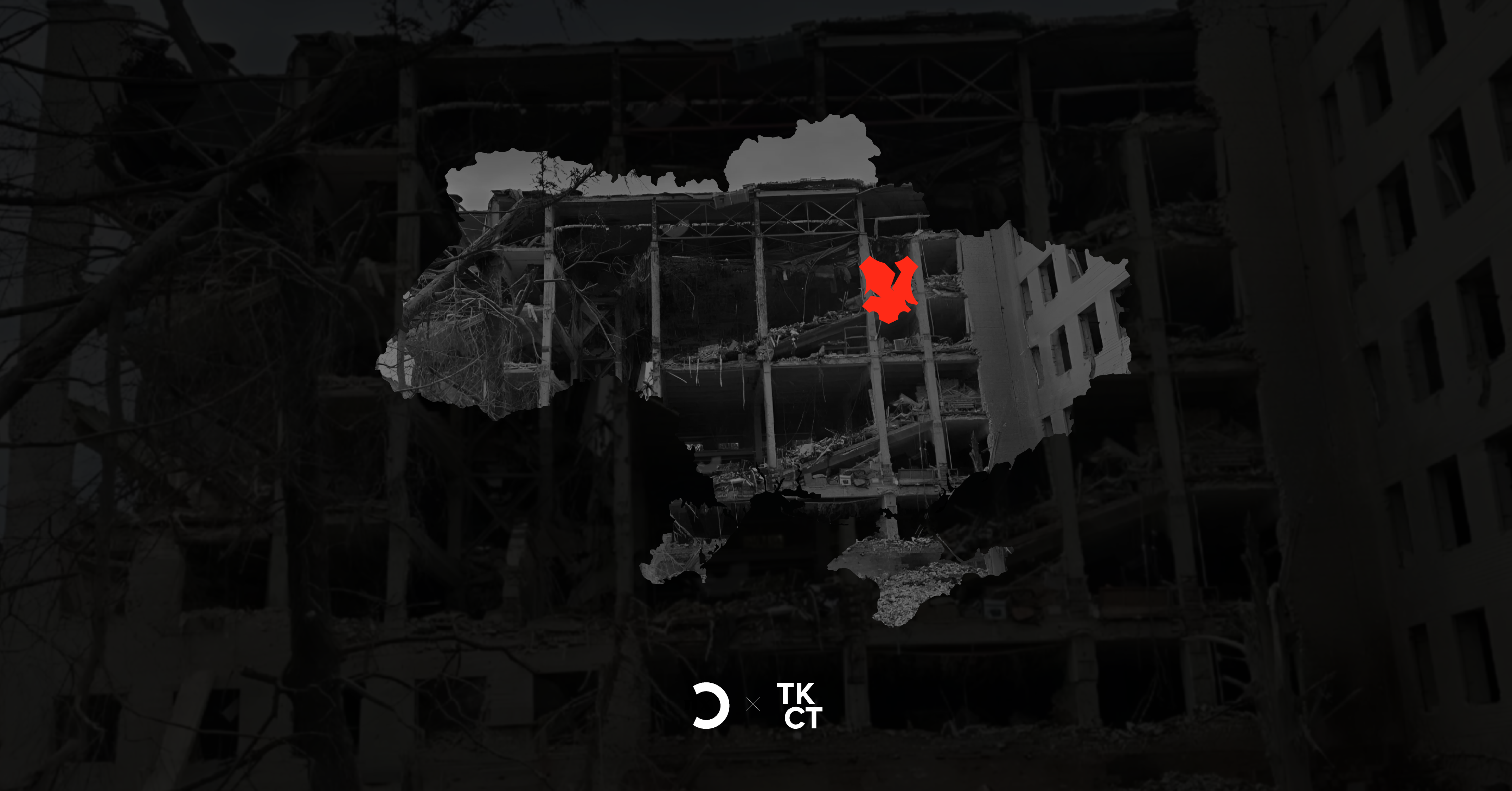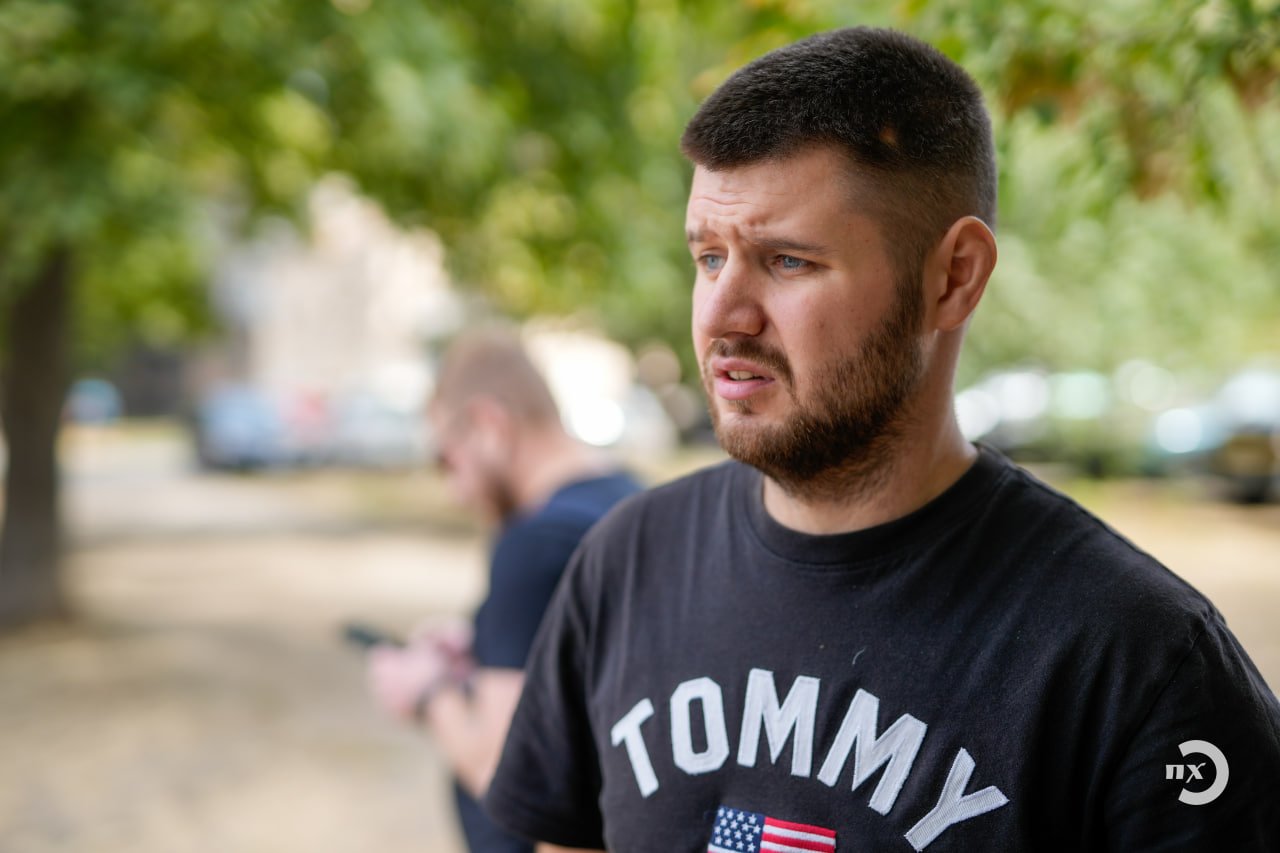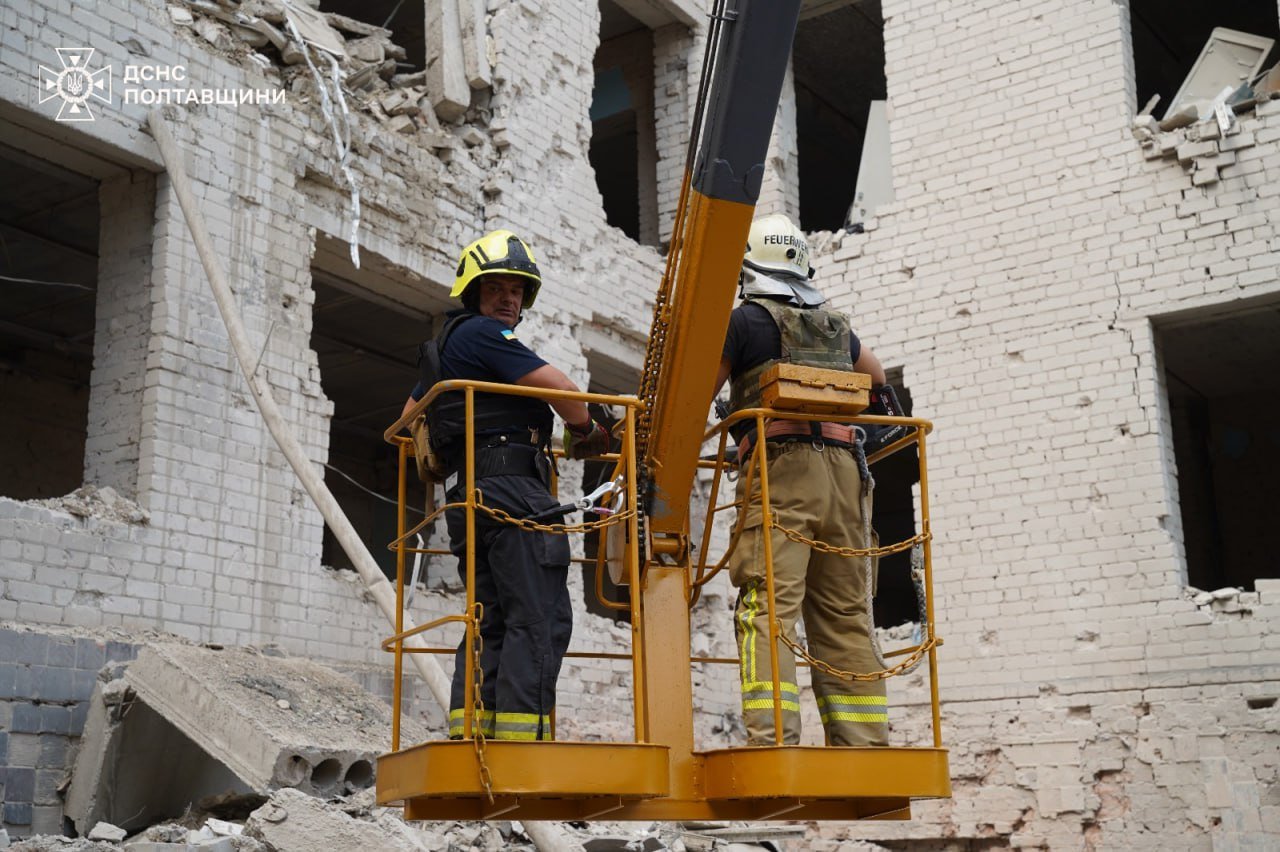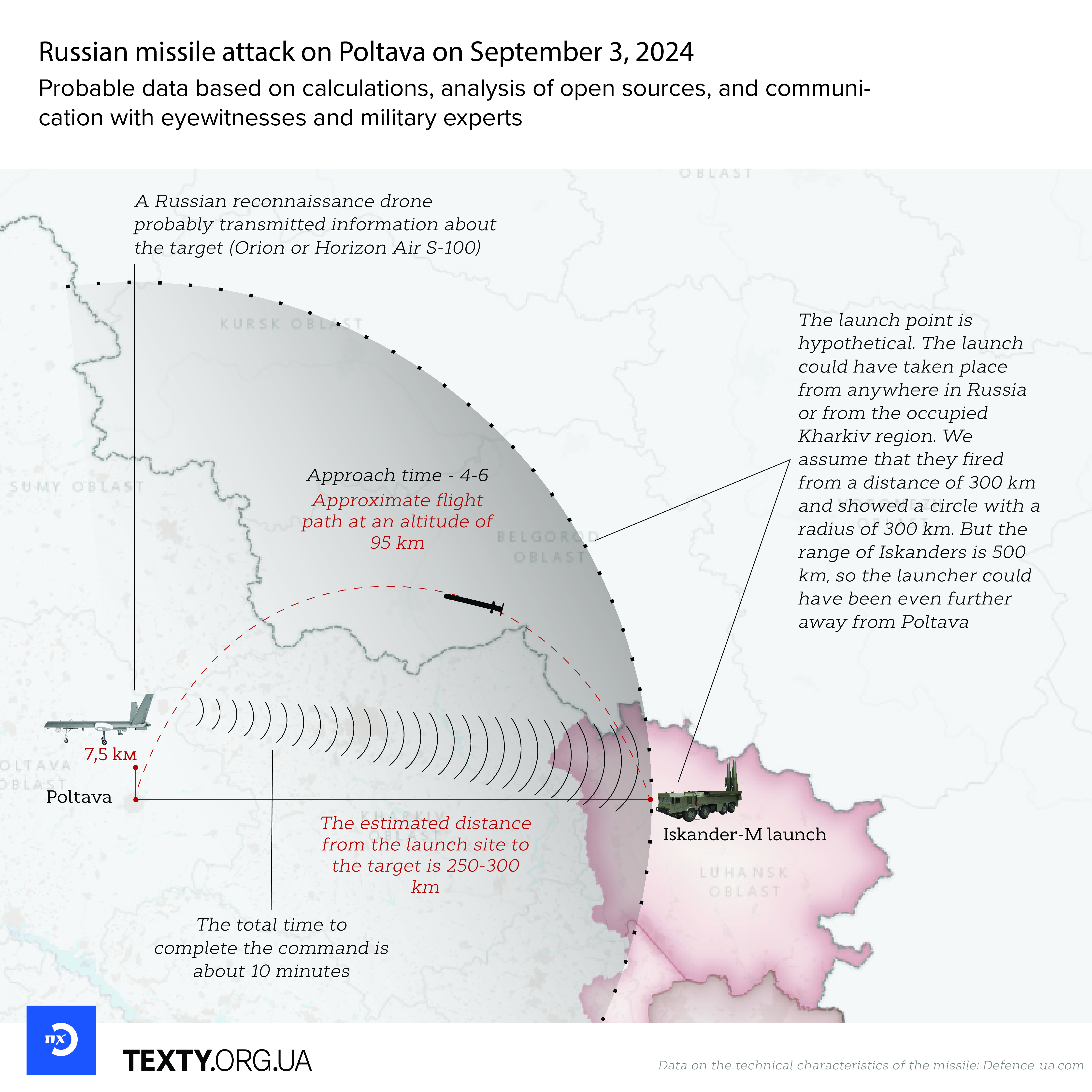"The wounded were thrown into an old ZIL". Reconstruction of the events after the rocket attack in Poltava
On September 3, Russians launched a double missile attack on a military educational institution in Poltava. A day later, the number of dead and wounded continued to grow (as of the evening of September 4, 53 dead, 298 wounded).
Rescuers from different regions of the country are still searching for people under the rubble. Relatives are coming to the city to find out at least something about their loved ones who were at the site of the attack. Doctors are fighting for the lives of twenty people in intensive care units.
Ihor Shafarchuk, a volunteer who was one of the first to arrive at the scene, rescuing people and organizing the triage of the wounded, told what happened in the first minutes after the explosions. A military expert explained whether it was possible to prevent the strike or shoot down the ballistics.

This text was prepared by Texty.org.ua in partnership with the Poltava-based independent media outlet Poltavska Khvylia.
September 3
At 09:08, an air raid alert was declared in Poltava region. Two minutes later, two explosions occurred in Poltava. Thick smoke began to rise over the Institute of Communications.
Hospitalists Ihor Tkachov and Polina Melnyk, as well as volunteer Ihor Shafarchuk, were among the first to arrive at the scene and helped us reconstruct the events.
That morning, Ihor woke up to loud explosions. A thought flashed through his mind: "Something happened."

After February 24, Ihor Shafarchuk returned to Poltava from Kyiv and founded the Free and Unbreakable charity foundation, which helps the military, children in the de-occupied territories, and evacuates people from hot spots.
"I got into an ambulance that we are currently building for the Third Assault Brigade. Everything was already prepared there: first aid kits, gloves, everything you need. In four minutes, I was there, driving into the thick smoke. At the gate, I saw bodies covered in blood. I felt my adrenaline jumping, put on gloves, took the first aid kits, and started working," he says.
The first wounded lying near the gate of the Institute had contusions and were disoriented and screaming. Volunteers applied an occlusive sticker to a man with a chest wound. Then they began to take people out of the building.
"What we saw next shocked us. There were a lot of seriously wounded people. These were people with tripwires on three or even four limbs with punctured chests. We had to work with each wounded person very quickly. Everything was a blur, I don't remember much of it," says Ihor.
Hospitalist Ihor Tkachev wrote on his Instagram page:
"There was a huge old ZIL truck in front of us, and they were just loading the wounded into it. They were placed on rags, blankets, doors, lifted almost above their heads, and thrown into the trunk."
"We were surprised that there was no sorting of the wounded."
Most of the wounded had amputations, massive bleeding, chest injuries, and burns. People were in a state of clouded consciousness, screaming and interfering with the medics. We had to work with the wounded in two teams: one person held them, and the other applied a tourniquet or tampons to the wound.
The Institute's yard was in chaos. At that time, other volunteers, rescuers, and ambulances began to arrive.
"We were surprised that there was no sorting of the wounded. Three or four wounded of varying degrees of severity were put in one ambulance. We saw that the "easy" ones were taken away immediately, while one was lying there and, roughly speaking, was already "leaking." So we took it into our own hands, distributed the wounded, and prioritized evacuation. People responded well to this, they understood everything at once," the volunteer recalls.
The man emphasizes that the situation was critical and emotionally difficult, even for the hospitalists themselves. Neither the rescuers nor the medics were prepared for this, but everyone did their job.
The main obstacle for the hospitalists was the uncertified Chinese tourniquets that were constantly brought by civilians and volunteers and which could not stop the bleeding. And the fact that very few people knew how to provide first aid.
This tragic incident once again reminds us that every Ukrainian must have certified tourniquets for all limbs, a first aid kit, and know how to use it.
For about an hour, Ihor Shafarchuk and his comrades helped the wounded until rescuers, utility companies, and other services arrived.
"We already knew from our experience that we had to go for water and food. In a few hours, we brought over 600 liters of water and about 400 meals. Many businesses joined in: restaurants prepared food, such as Chichikov, The Same Lamb, Augustine, and 17teen. Also, MarketOpt filled an ambulance with water and provided us with a lot of pizzas, probably more than 100 pieces," the volunteer adds.
***
12:26. A rapid response center has been set up for the victims of the missile strike.
14:16. The Ministry of Defense officially reported that the Russians hit the city with two ballistic missiles, partially destroyed one of the buildings of the Institute, and many people were trapped under the rubble.

14:18. Volodymyr Zelenskyy reported 41 dead and 180 wounded. An investigation into the circumstances of the tragedy has begun. A three-day mourning period was announced in Poltava region. A line of more than 150 donors has gathered at the blood transfusion station.
17:50. First Lady Olena Zelenska reports 47 dead. Relevant services began to inspect houses and record the consequences of the Russian attack.
21:20. Every 15 to 20 minutes, rescuers announce a minute of silence to hear people who remain under the rubble. Rescue operations lasted all night and continued on September 4.
September 4
According to the State Emergency Service, the death toll has risen to 53. Rescuers managed to dismantle 70% of the destroyed building. 20 people are in intensive care in serious condition, and doctors are fighting for their lives. Relatives of those who were in the epicenter or near the missile strike and are not in touch are arriving in Poltava. They are sent to the forensic medical examination bureau to identify the bodies.
In the afternoon, the regional leadership briefed journalists. In particular, Andriy Khyzhnyak, head of the Poltava Oblast State Emergency Service, denied the volunteers' information about the poor quality of the turnstiles:
"Each of our rescuers is provided with turnstiles and appropriate protective equipment. Therefore, regarding the issue of low-quality turnstiles and their installation, we really did not have time to install them there. There may have been isolated cases before we handed them over to the medics, but they were professional turnstiles; I looked at them, and thanks to the actions of the rescuers, we saved 25 people," Khyzhnyak added.
Ihor Mitsyuk, head of the Poltava Military Communications Institute, emphasized that there were no measures related to lining up or gathering people:
"I assure you that no events were held and were not supposed to be held. The last mass events were held before the Covid. And since the beginning of the war, even gatherings of more than ten people have been prohibited on our territory."
But he added that the Institute's management is reviewing security measures.
However, according to an eyewitness to the tragedy who was injured, people did gather, and not just ten people at a time. According to him, the military, who were training on the territory of the educational institution, even went to the dining room in formation.
Around 5 p.m., Nadiia Kucher, a representative of the Institute of Mass Information in Poltava Oblast, said that Ukrainian and foreign journalists were not allowed to work at the site of the Russian missile strike until the rubble was cleared or at the hospital where the victims were being treated.
They were prevented from working at the site of the hit by the unit's duty officer and the head of the National Guard unit, despite having the accreditation of the Armed Forces of Ukraine. The press service of the Poltava Regional State Administration is at the hospital.
According to Oksana Romaniuk, director of the Institute of Mass Information, the denial of access to the site of the Russian missile hit is a violation of Part 4 of Article 25 of the Law "On Information".
From Texty.org.ua:
Officials' statements about the absence of crowds and the availability of medical aid contradict eyewitness accounts. The fact that journalists were not allowed to the scene may indicate a desire to conceal alleged violations that deprived people of a chance to be rescued.

Sources of data and grounds for assumptions
Rumors about the conditions under which the strike occurred spread rapidly online. Not least because of the lack of official reports, people put forward different versions, including those about air defense.
Eyewitnesses mentioned a reconnaissance drone circling the city before the missile strike. It could have been an Orion drone, which has a range of up to 250 km, or a Horizon Air S-100 (range of up to 180 km).
Read more about Russian drones in Ukrainian skies here
It works like this: the drone sees and transmits information, and the Russians immediately launch the Iskander at the target. The time it takes for the strike command to pass through the entire chain from the moment the UAV operator says: "I see the target" is about 10 minutes, and the approach time is about 4-6 minutes.
"The Orion can climb to an altitude of 7 km, while the Horizon Air S-100 can climb to 5.5 km. Ukraine cannot massively shoot down reconnaissance drones because of its limited air defense capabilities. Electronic warfare can only prevent it from completing its mission.
It is not known for certain whether the drone was over the educational institution just before arrival. The Russians could have studied the schedule in advance and calculated the time when there were the most people in the building (right after classes started). Or, which is also possible, the Russians fired the missile immediately after the drone transmitted fresh information about the presence of people.
It could have been a mobile unit located in Russia or in the occupied Kharkiv region (there is no information on the launch site). The very first alarm notification in the monitoring telegram channels was at 09.08.43. And the first report of the explosion was at 09:10:26.
"There were no more than two minutes between the alarm and the explosions," said Poltava resident Olena Zaporozhan," I checked the time on my phone. At 9.08, there was an alarm. At 9.11, I received calls from my family asking if I was okay."
Those who were on the upper floors of the five-story buildings had no chance to run for cover. The largest number of dead and wounded were among those who left through the third and fourth evacuation exits, said Ihor Mitsiuk, head of the Institute of Communications. They were on their way to evacuate, and at that moment, there was an arrival.
"The front wall of the educational building completely collapsed, and a second missile hit the middle of the building. The educational building is a brick building, so after the impact, the bricks were scattered, and people were trapped. There were six evacuation exits, four of which were fully equipped with personnel, and two were blocked on the way. That's why there were so many dead and wounded," explained the head of the Institute.
Philip Pronin added that, given the time from the beginning of the air alert to the arrival, not everyone had time to hide.
According to the data released by the General Staff of Ukraine on August 21, about 5% of the Iskander-M/KN-23 ballistic missiles were shot down during the full-scale invasion.
Expert: "Only Patriot could have intercepted the missile, but it was not there."
As one of the air defense officers told us, the Iskander ballistic missile that the Russians fired at Poltava leaves virtually no chance of being shot down and rescued by those who come under attack. The flight time to the target is a matter of minutes, it travels at a speed of 3-4 Mach (3.6-4.9 thousand km/h)
The warhead weighs up to 450 kg, so it is guaranteed to destroy almost any building.
The only thing that can intercept it is the Patriot system, but it was not there.
"If they had paid attention to the UAV that was hovering there earlier, there would probably have been fewer casualties," the expert suggested.
He calls the problem systemic - almost all the locations of the training centers have been known to the Russians since Soviet times, and the UAV simply acts as a reconnaissance vehicle, transmitting information in real time: "I see a cluster of soldiers, fire!" - besides, there are plenty of enemy agents among the locals. It has been flown to various training centers more than once, and this problem has not yet been solved.
As already mentioned, the Russians have reduced the decision-making time for a strike to about 10 minutes (see details here).
"The Iskander (Iskander, complex index 9K720, US and NATO classification: SS-26 Stone) is a Russian tactical missile system. It was developed at the Kolomna Machine Building Design Bureau (KBM). It began development in 1988, was first presented in 1999, and has been in mass production since 2005.
It launches surface-to-surface missiles of various types: Iskander, Iskander-M, and Iskander-E ballistic missiles, as well as Iskander-K cruise missiles.
The complex consists of a self-propelled launcher with two missiles, a transport and reloading vehicle, a command and control vehicle, an information preparation unit, a maintenance and service vehicle, and a life support vehicle.
The maximum range is up to 500 km.
"The Iskander-M can be equipped with a cluster warhead. The Russian armed forces attacked Zaporizhzhia with such missiles at least twice - on October 5 and November 13, 2022.
The missile hits the target at almost right angles to the surface.
The editorial office does not have exact data on which modification of the Iskander arrived, but judging by the fact that the arrival occurred a couple of minutes after the alarm was announced, it was a ballistic Iskander-M.

